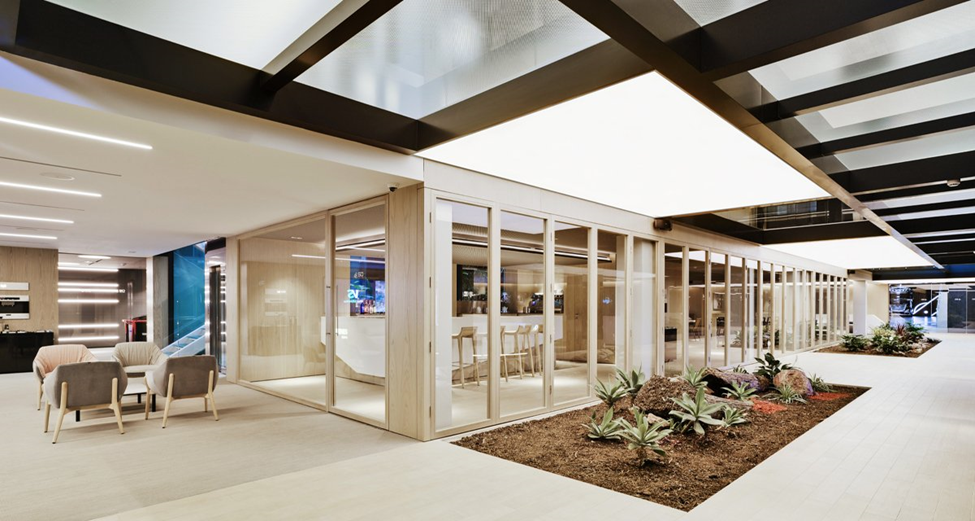Lighting is a crucial element in biophilic design, as it helps create a connection between indoor spaces and the natural world. Biophilic design aims to incorporate nature and natural elements into the built environment to enhance well-being, productivity, and overall satisfaction. Lighting plays a significant role in achieving these goals by simulating natural light and creating a harmonious environment. Here are a few ways lighting contributes to biophilic design:
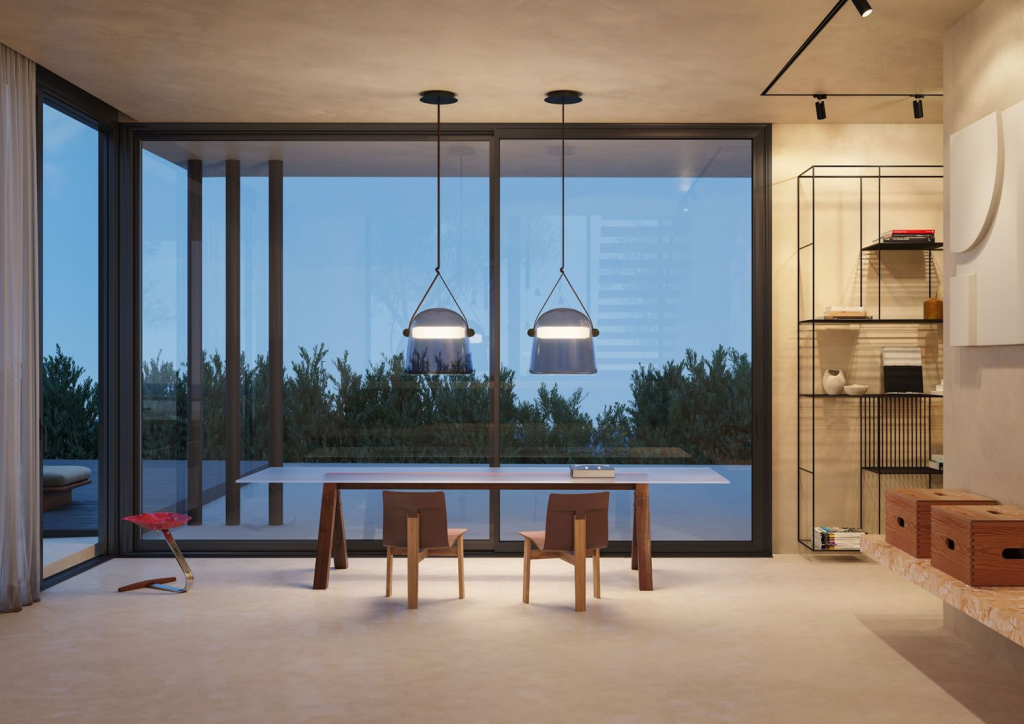
- Natural Light Simulation: Natural light is an essential aspect of biophilic design. Incorporating ample windows, skylights, or other openings that allow natural light to enter a space helps establish a visual connection with the outdoors. It provides a sense of openness and can positively impact the mood, circadian rhythm, and overall health of occupants, increasing productivity at the workspace. Daylighting strategies, such as using light shelves, light tubes, or reflective surfaces, can maximise the penetration of natural light into interior spaces giving the office a relaxing aura.
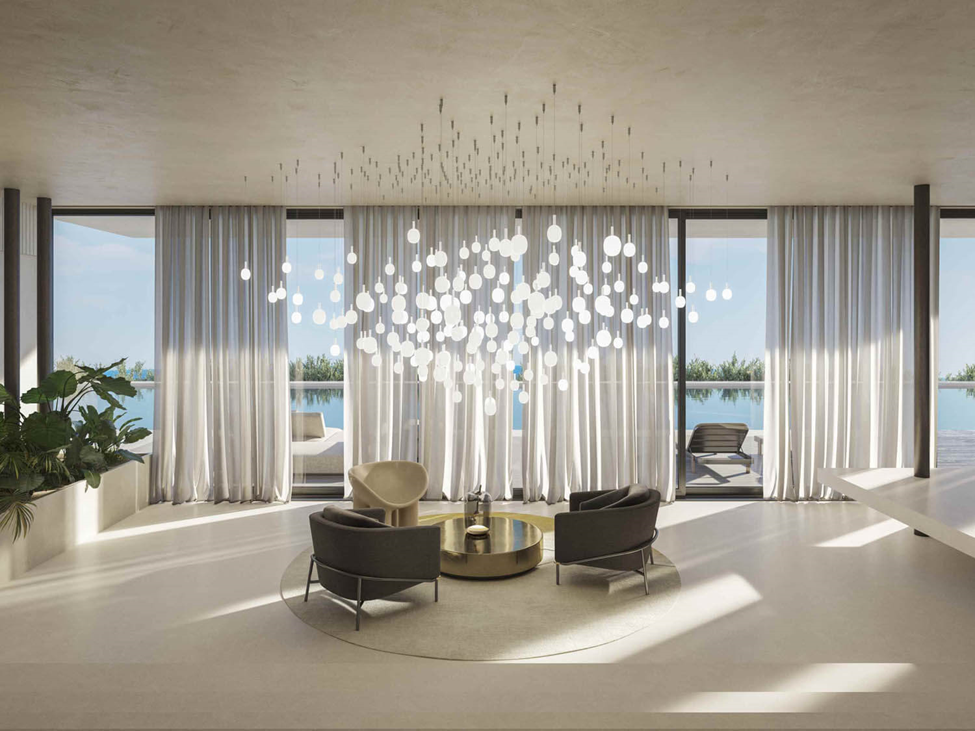
- Dynamic Lighting: Dynamic lighting systems replicate the natural changes in light intensity and colour temperature throughout the day. By adjusting the lighting levels and colour temperatures based on the time of day, these systems mimic the gradual transitions from dawn to dusk. This dynamic lighting can help support alertness during the day and promote relaxation in the evening, enhancing occupants’ overall well-being. This is a useful addition owing to the quantum of time employees spend in the workspaces.
- Circadian lighting: Circadian lighting uses lighting technologies and strategies that mimic the natural patterns of light and darkness throughout the day. It aims to support and regulate our internal circadian rhythms, that in turn, govern our sleep-wake cycle, hormone production, metabolism, and other physiological functions.
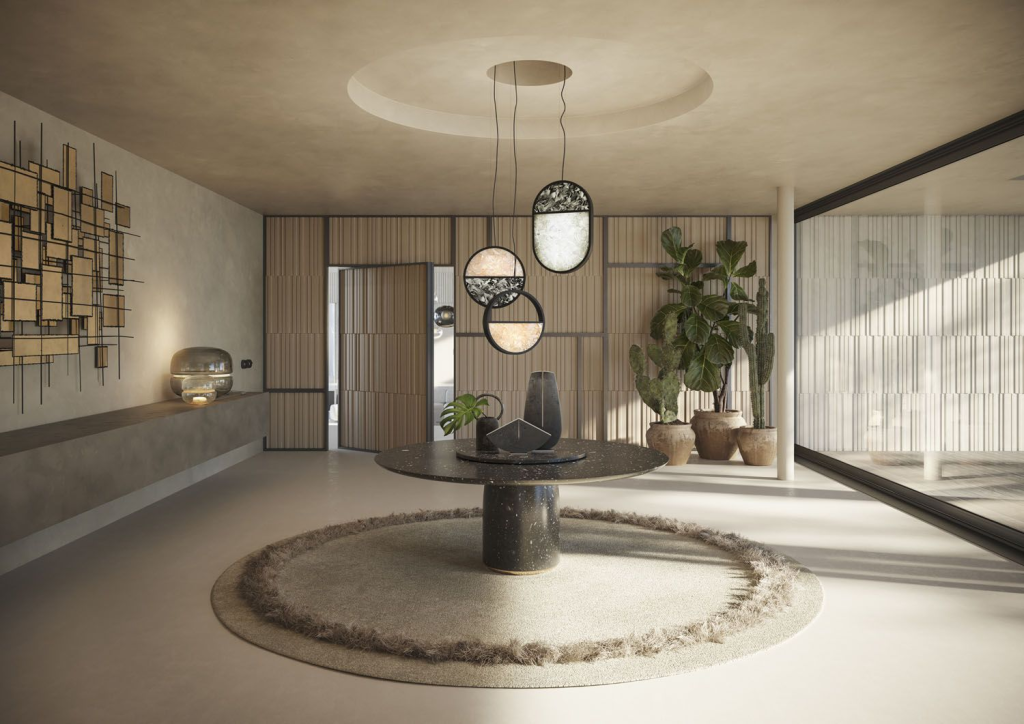
4. Mimicking Nature: Lighting fixtures that resonate with biophilic design can be introduced by mimicking organic shapes found in nature, such as leaves, flowers, or tree branches. These fixtures not only provide illumination but also serve as decorative elements that evoke a sense of nature within the space. Biomorphic lighting fixtures can be designed to cast patterns resembling dappled sunlight through trees or create the illusion of natural elements indoors. Such features give the space a distinct and memorable appeal.
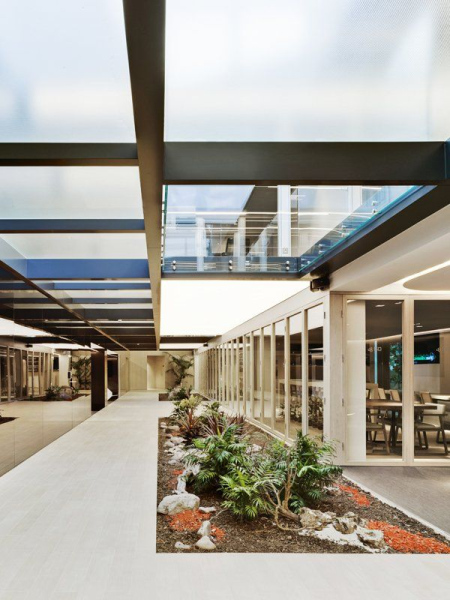
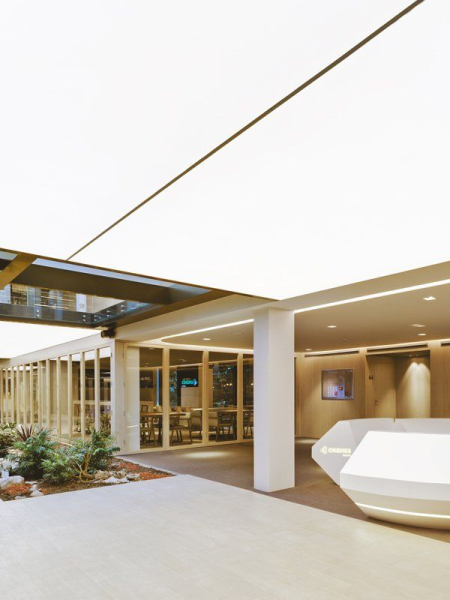
5. Colour Rendering and Temperature: Lighting colour temperature and colour rendering can significantly impact the perception of space and the quality of the environment. Warm colour temperatures, such as those resembling the golden hour, can create a cosy and inviting atmosphere. High colour rendering index (CRI) lighting helps render colours more accurately, enhancing the appearance of natural materials and vegetation within the space.
By considering these lighting strategies and incorporating them into the design, biophilic environments can help bring the benefits of nature indoors and foster a connection with the natural world.

